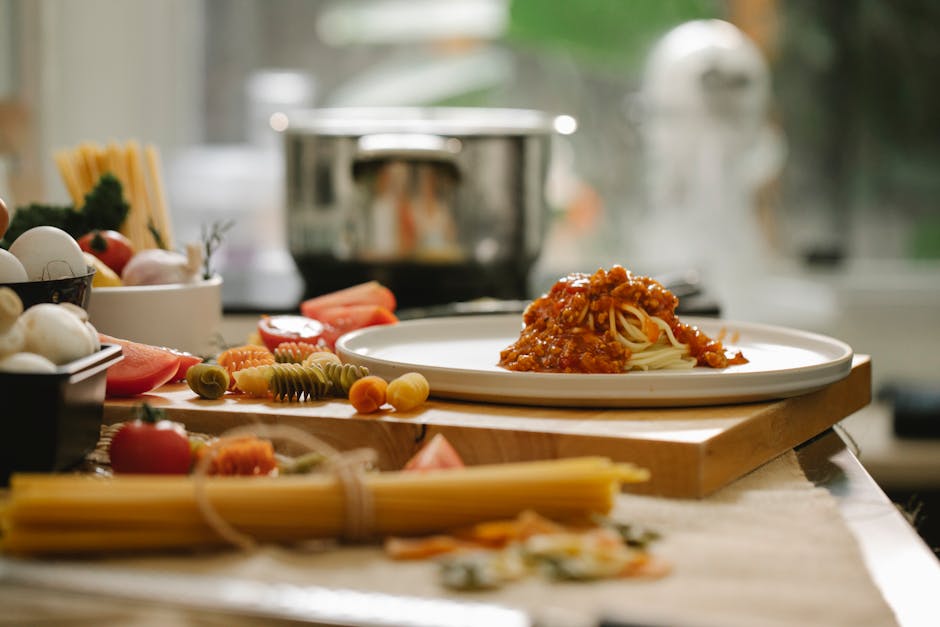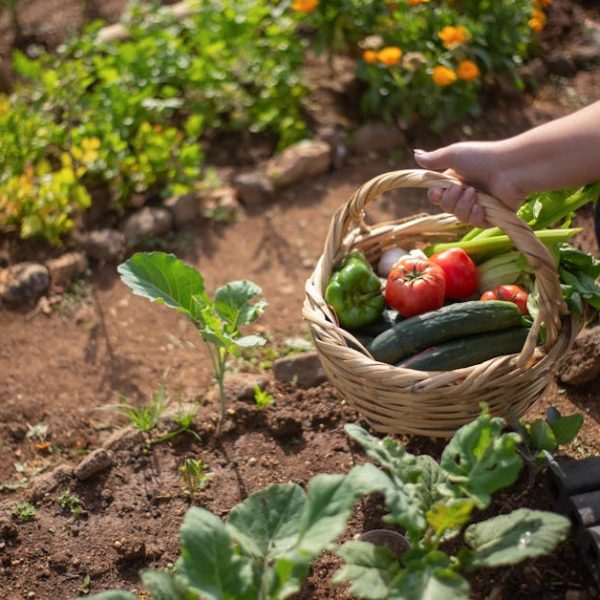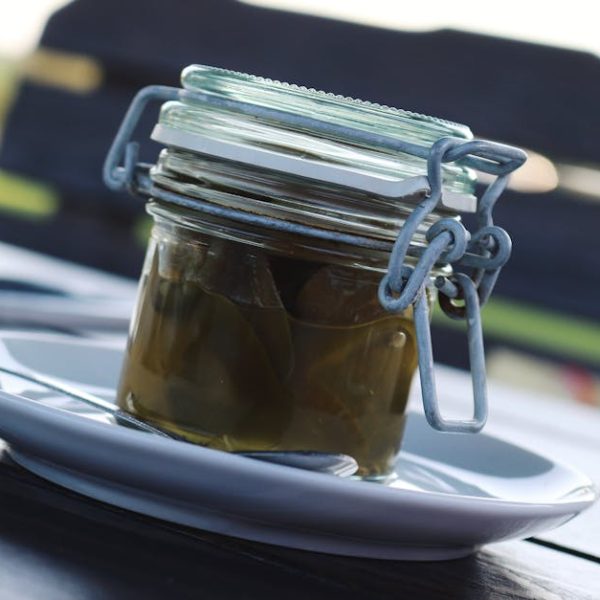In every kitchen across America and beyond, spaghetti sauce is a staple. But if you’re used to reaching for that same old can or jar, today’s the day to break that cycle! We’re offering you three superb homemade spaghetti sauce recipes that will certainly tantalize your taste buds. Making your own sauce not only allows you to tweak the flavors to your liking but also gives you control over the ingredients you’re putting in your body. So, join us as we twirl our way through these simple, flavorful recipes.
Recipe 1: Classic Italian Spaghetti Sauce
Do you crave the authentic, tangy flavor of a classic Italian tomato sauce? This homemade spaghetti sauce brings all your favorite Italian seasonings into play, paired with the richness of slow-stewed tomatoes. The key to this stellar sauce lies in selecting ripe Roma tomatoes for their intense flavor and thick flesh, which contributes to that hearty consistency. Also, combining fresh aromatic basil with a dash of dried oregano and chili flakes creates the perfect symphony of flavors.
- List of Ingredients:
– 10 ripe Roma tomatoes
– 2 garlic cloves
– 1 large onion
– A bunch of fresh basil leaves
– Spices: dried oregano, chili flakes, salt, and pepper
- Cooking Tips:
– Use a heavy-bottomed pan to avoid scorching.
– Slow simmer the sauce for at least 3 hours for a burst of flavors.
Homemade Italian spaghetti sauce presents an excellent opportunity to experiment between fresh and dried herbs.
- Fresh vs Dried Herbs: Fresh herbs provide a vibrant, robust flavor, preferable in quick-cooking or raw recipes. Conversely, dried herbs pack a more concentrated taste, perfect for a slow-cooked sauce like this.
Recipe 2: Hearty Meat Spaghetti Sauce
If juicy, tender chunks of meat in your spaghetti sauce make your heart swoon, this hearty homemade sauce is your match. The foundation of this recipe consists of lean ground beef perfectly integrated into a tomato base, ensuring flavor in every bite without any compromise to your diet.
- List of Ingredients:
– 1 lb lean ground beef
– 10 ripe Roma tomatoes
– 2 garlic cloves
– 1 large onion
– Spices: dried basil, dried oregano, chili flakes, salt, and pepper
- Cooking Tips:
– Choose meat with less fat to maintain a healthier option.
– Always brown the meat before adding tomatoes.
The meat’s caramelization adds an unrivaled depth of flavor to this hearty sauce, proving that one simple trick can transform your spaghetti dinner into a gastronomic delight.
When it comes to a flavorful spaghetti sauce, cooking methodology makes all the difference. Which brings us to the age-old debate of homemade vs canned sauce.
Canned Spaghetti Sauce Vs Homemade Spaghetti Sauce
Canned spaghetti sauce does offer admirable convenience, however, homemade sauce is the winner here when considering taste authenticity and health benefits. While store-bought sauce can help save time, homemade spaghetti sauce is all about flavor customization and fresh ingredients, especially if you’re conscious about sodium intake and artificial preservatives.
Pros and Cons:
| Homemade Spaghetti Sauce | Canned Spaghetti Sauce | |
|---|---|---|
| Flavor | Customizable, fresh | Consistent but less fresh |
| Nutritional Value | Higher, no preservatives | Lower, due to preservatives |
| Convenience | Preparation time required | Quick, ready-to-use |
| Cost | Depends on ingredient choice | Fixed, often lower |
And there we have it; your guide to navigating between canned and homemade spaghetti sauce. Keep these points in mind next time you’re debating which sauce to slather on your pasta!
Recipe 3: Vegan Friendly Spaghetti Sauce
If you’re looking for a plant-based alternative that doesn’t compromise on taste or texture, this vegan-friendly spaghetti sauce should be your go-to. By using an array of fresh vegetables and plant-based protein, this recipe calls for a remarkable richness that won’t have you missing the meat.
- List of Ingredients:
– 10 ripe Roma tomatoes
– 2 garlic cloves
– 1 large onion
– 1 red bell pepper
– 1/2 cup of plant-based protein
– Fresh parsley
– Spices: dried basil, dried oregano, chili flakes, salt, and pepper
- Cooking Tips:
– Use textured vegetable protein or lentils as plant-based protein options.
– Consider tomato paste as an addition to help thicken the sauce.
There’s a common misconception that plant-based meals lack flavor and nutritional value. However, this vegan spaghetti sauce strongly challenges that notion.
- Meat Sauce Vs Vegan Sauce: The vegan sauce offers a balance of carbohydrates, protein, and fiber without the saturated fats present in meat sauce. Plus, plant-based foods are loaded with beneficial phytonutrients and antioxidants, adding a health boost to your delicious sauce.
How to Store and Reheat Spaghetti Sauce
Now, let’s look into proper storage and reheating of spaghetti sauce to retain taste and nutritional value. Sealed glass containers or plastic containers with a secure lid are the ideal choices for fridge storage. They ensure longevity and freshness, with sauces lasting up to 5 days.
- Best Practices:
– After cooling to room temperature, store in an air-tight container.
– Avoid reheating sauce repeatedly as it causes a significant texture and taste alteration.
- Pro Tips:
– The most recommended way to reheat is on a stovetop over medium heat, stirring continuously.
– Popping sauce in the microwave? Remember to cover and pay attention to avoid overheating, which can adversely affect taste.
Here’s a simplified checklist to guide you on properly storing and reheating spaghetti sauce:
- Duly cool sauce before storing
- Select the appropriate container
- Store in the refrigerator, not at room temperature
- Avoid multiple reheating cycles
- Reheat gently over medium heat or use microwave responsibly
Now that you’ve got these delicious homemade spaghetti sauce recipes (and some handy tips on storage and reheating), bid farewell to store-bought cans! Taste the authenticity, enjoy the process, and revel in the compliments on your great cooking skills. There’s nothing quite like a bowl of spaghetti drenched in a sauce crafted by you. So don your apron and show that pasta who’s boss!
Key Takeaway:
- The article provided a comprehensive guide to making three distinct homemade canned spaghetti sauces: Classic Italian, Hearty Meat, and Vegan-Friendly recipes. It showcased the importance of ingredient selection, cooking procedures, and flavor blending.
- The piece also debated homemade vs canned spaghetti sauce, establishing the former as a healthier option with a more authentic taste and complete control over the content. However, it acknowledged the convenience of canned sauces for time-strapped people.
- Furthermore, it outlined methods to store and reheat spaghetti sauces properly, to preserve their freshness, taste, and nutritional values.
The joy of making your spaghetti sauce at home is unmatched. It offers you the freedom to tweak the recipes according to your preference and dietary needs. Moreover, taking this extra step not only gives you a healthier meal but also adds an authentic touch to your food, leaving a lasting impression on your taste buds. So, go ahead, explore these recipe options, and turn your ordinary spaghetti dinners into extraordinarily savory experiences!
FAQs
Q: Can I freeze the leftover spaghetti sauce?
A: Yes, you can freeze spaghetti sauce. Ensure that you cool the sauce to room temperature before transferring it to freezer-safe containers. Frozen sauce can last up to 4-6 months.
Q: What can I use as a substitute for Roma tomatoes in the recipes?
A: In case you do not have Roma tomatoes, you can use other types of canned tomatoes such as diced, stewed, or whole tomatoes. The taste might differ slightly, but you’ll still have a tasty spaghetti sauce.
Q: Is it necessary to brown the meat before adding it to the sauce?
A: Browning the meat is a recommended step as it helps to enhance the flavor of the meat sauce. However, if you’re short on time, you can add the uncooked meat directly to the sauce.
Q: What other types of meat can I use for the Hearty Meat Spaghetti Sauce?
A: Apart from ground beef, you can also use ground pork, chicken, turkey, or sausage for a change of flavor.
Q: How can I make my spaghetti sauce less acidic?
A: To offset excess acidity in your sauce, you can add a pinch of sugar or some grated carrots. Both these ingredients work well to neutralize the acidity.
Continue exploring our website for more interesting recipes and cooking tricks. Share this article with your friends and family to spread the joy of homemade cooking.






